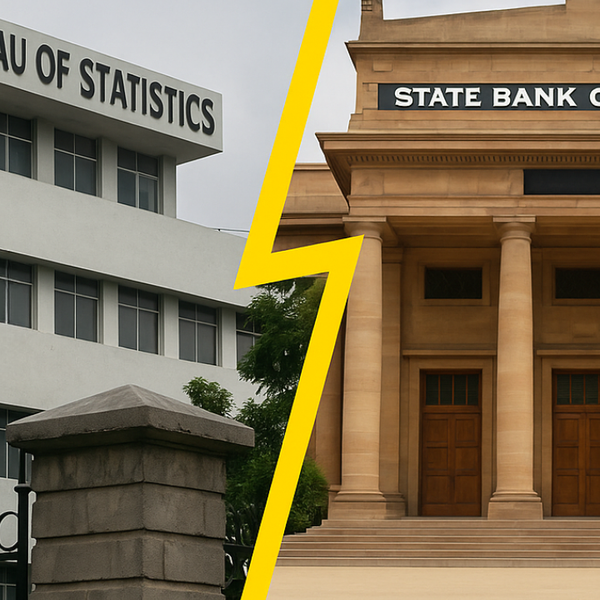Shifting Economic Landscapes: Arab Nations in the World Bank’s Income Classification
Latest report highlights shifting economic classifications due to recent geopolitical and economic events

Rana Tabbara
Senior Business Producer
Rana Tabbara is a UAE-based reporter and content creator known for dynamic storytelling, impactful reporting, and high-profile interviews. She interviewed leaders including the UAE Minister of Energy, the Australian Prime Minister, the Saudi Minister of Tourism, the Armenian Minister of Economy, and CEOs of major companies. Rana covered big events like the World Government Summit, LEAP, Cityscape KSA, IDEX, among others. Her previous experiences include The New York Times, CNN Business Arabic, and L'Orient-Le Jour.

Shutterstock
High-Income Nations: UAE, Saudi Arabia, Kuwait, Oman, Qatar.
Middle-Income Nations: Algeria, Iraq, Libya, Bahrain, Egypt, Morocco, others.
Low-Income Nations: Sudan, Yemen, Somalia, Syria.
However, the story is more complex for other Arab nations. Algeria, Iraq, Libya, and Bahrain were classified in the upper-middle-income category, while Egypt, Morocco, Tunisia, Mauritania, Djibouti, Jordan, Lebanon, and Palestine were placed in the lower-middle-income segment. The lowest-income category, unfortunately, includes Sudan, Yemen, Somalia, and Syria, reflecting the profound challenges these nations face amid ongoing conflict and economic strife.
Gaza’s Economic Downgrade
A particularly notable shift this year involved the West Bank and Gaza, the only areas to experience a downgrade. The war in Gaza, which erupted in October 2023, had a devastating impact on the region's economy. The conflict led to a staggering 9.2% drop in nominal GDP, translating to a 5.5% decrease in real terms, significantly impacting the fourth quarter of 2023. This economic downturn caused Gaza's Gross National Income (GNI) per capita to fall back into the lower-middle-income category, reversing its recent progress towards upper-middle-income status.
The World Bank’s Classification System
The World Bank categorizes global economies into four income groups: low, lower-middle, upper-middle, and high, based on GNI per capita. This classification system, updated annually, provides a broad indication of a country’s economic development, using the Atlas method to convert GNI figures into U.S. dollars. This method, in place since 1989, helps smooth out fluctuations in exchange rates, offering a more consistent measure of economic capacity.
Global Shifts in Income Classification
The income classification of countries has seen dramatic changes since the late 1980s. In 1987, 30% of reporting countries were categorized as low-income, while only 25% were high-income. By 2023, the global economic landscape had shifted significantly—only 12% of countries were low-income, and 40% had achieved high-income status.
However, these shifts have not been uniform across regions. In the Middle East and North Africa (MENA), the proportion of low-income countries rose from 0% in 1987 to 10% in 2023, underscoring the economic challenges faced by some nations in the region. Conversely, South Asia saw a dramatic decrease in low-income countries, from 100% in 1987 to just 13% by 2023, highlighting successful economic progress in that area.
Regional Reclassifications and Economic Overhauls
The reclassification of several countries this year reflects broader economic transformations. Algeria, for instance, moved from lower-middle-income to upper-middle-income status, driven by a comprehensive revision of its national accounts statistics. This revision, which aligned Algeria's data with international standards, resulted in a 13.3% increase in GDP estimates from 2018 to 2022. This boost was attributed to better measurements of investments, improved accounting for public administration production, and a more accurate representation of the informal economy.
Similarly, countries like Bulgaria, Palau, and Russia advanced to high-income status, showcasing their economic resilience and growth. On the other hand, nations like Iran, Mongolia, and Ukraine climbed to the upper-middle-income category, indicating significant economic improvements.
The Path Ahead
As the World Bank's classification continues to evolve, it paints a complex picture of global economic development. For the Arab world, these classifications highlight both the successes of resource-rich nations and the ongoing struggles of those mired in conflict and economic instability. The future of these economies will depend on their ability to navigate global challenges, implement effective reforms, and, where possible, leverage their unique strengths to foster sustainable growth.










Comments
See what people are discussing